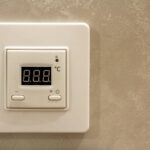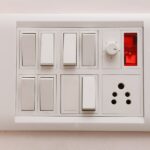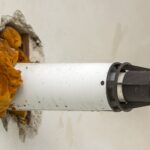In the world of modern plumbing, the Water Supply Manifold System offers a cutting-edge approach to central distribution, transforming how water is managed in both residential and commercial spaces. As demands for efficient water systems grow, this manifold solution emerges as a key player in elevating performance and sustainability standards. The article will delve into its transformative impact and practical applications.
- Discover how central distribution with manifold systems can drastically improve water pressure and lower energy use.
- Gain insights into designing a Water Supply Manifold System, focusing on material choices and layout planning for optimal efficiency.
- Explore the system’s role in boosting operational efficiency and contributing to sustainable plumbing practices.
By integrating a Water Supply Manifold System into your projects, you stand to enhance water flow management, reduce waste, and achieve greater sustainability, making it an invaluable consideration for any plumbing infrastructure upgrade.
The Advantages of Central Distribution Using Water Supply Manifold Systems
Implementing a Water Supply Manifold System offers numerous advantages that make it an ideal solution for both residential and commercial applications. One of the primary benefits is the significant improvement in water pressure. By having direct lines from the manifold to individual fixtures, water pressure remains consistent and strong.
Another advantage is the reduction in energy consumption. Central distribution systems, like the manifold, are designed to optimize water flow efficiently, minimizing the energy required to deliver water throughout the building. This can lead to notable energy savings over time, contributing to lower utility bills.
Maintenance is also greatly simplified with manifold systems. Because all control valves are located in one accessible area, it is easier to conduct repairs or replacements without disrupting the entire system. Such ease of maintenance not only saves time but also minimizes potential downtime, which is crucial in busy settings like commercial kitchens.
Furthermore, the manifold system is particularly optimal for both new constructions and retrofitting existing structures. Its modular nature allows for versatile installation, ensuring compatibility with various building designs and layouts. As a result, many builders and renovators are now considering the manifold system a go-to solution for efficient water distribution.
Designing Your Water Supply Manifold System
When designing a Water Supply Manifold System, several critical considerations come into play to ensure maximum efficiency. Proper layout planning is essential. It’s crucial to position the manifold centrally within the building, minimizing pipe lengths to various fixtures and thereby optimizing performance and resource usage.
Material selection is another vital aspect. Opting for durable materials such as copper or PEX piping can significantly influence the longevity and reliability of the system. These materials are chosen for their resistance to corrosion and ease of handling, ensuring a longer lifespan and fewer maintenance issues.
Sizing components correctly is equally important. Properly calculated pipe diameters and manifold sizing ensure that the system can handle the water demand without sacrificing pressure or flow rate. Utilizing industry guidelines and consulting with plumbing professionals can aid in achieving the best results.
For seamless integration with existing plumbing infrastructure, it is crucial to assess the current system’s capabilities and possibly upgrade or modify sections to accommodate the manifold technology. By carefully considering each of these design aspects, you can create an efficient, high-performing water distribution system that meets modern plumbing standards.
Efficient Water Distribution with the Water Supply Manifold System: Central Distribution Solutions
The Water Supply Manifold System represents a significant advancement in plumbing, offering a centralized distribution mechanism that enhances operational efficiency. By strategically channeling water through a central hub, this system ensures that every outlet receives optimal water flow. This precision in water distribution not only improves the performance of faucets and appliances but also reduces unnecessary water waste.
One of the key benefits of employing this system is its ability to maintain consistent water pressure across multiple outlets, even when the demand is high. This is particularly beneficial in both residential homes and larger commercial establishments, where fluctuating water pressure can cause issues.
Furthermore, the centralized approach facilitates easier isolation of problems, such as leaks or blockages. With a Water Supply Manifold, maintenance becomes more streamlined, allowing for quicker repairs without disrupting the entire water supply. This modular design can lower long-term maintenance costs and extend the lifespan of the system.
The system’s efficacy also aligns well with sustainable building practices. By optimizing water flow, the Water Supply Manifold System contributes to water conservation efforts, a critical aspect of modern plumbing standards. It supports the principles of sustainable development by minimizing water waste and energy consumption, ultimately aiding in the reduction of utility costs and environmental impact.
Integrating the Water Supply Manifold System into a building’s infrastructure not only meets current plumbing codes and standards but also positions the structure as a future-proof model of efficiency and sustainability. Embrace this innovative solution to elevate the operational efficiency and eco-friendliness of your projects.
Frequently Asked Questions
What is a Water Supply Manifold System?
A Water Supply Manifold System is a centralized pipe distribution setup that allows water to be directed from a main supply line to multiple outlets efficiently.
How does it improve water pressure?
By directly connecting each fixture to the manifold, it reduces restrictions, resulting in more consistent and improved water pressure.
Can it be used in existing buildings?
Yes, the system can be retrofitted into existing plumbing infrastructures with some adjustments.
What materials are typically used in a manifold system?
- Copper
- PEX (cross-linked polyethylene)
- Stainless steel
Is it energy-efficient?
Yes, it reduces energy consumption by minimizing water waste and decreasing reliance on booster pumps.
What maintenance does it require?
Routine inspections for leaks and ensuring that valves and connections are secure is recommended.
How does it contribute to sustainability?
The system enhances water-use efficiency, contributing to lower utility usage and promoting sustainable building practices.





